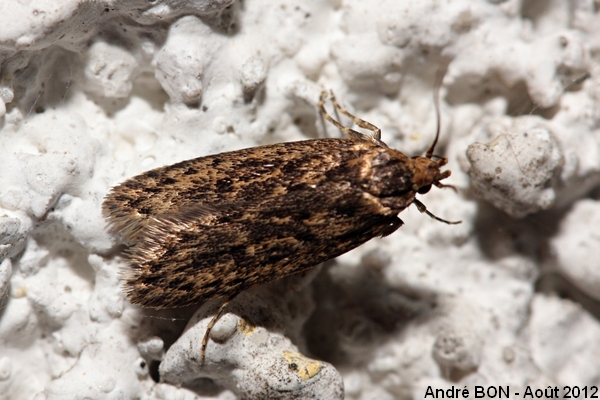
| Brown House-moth (Hofmannophila pseudospretella (Stainton, 1849)) |

|
|
Scientific name: Hofmannophila pseudospretella (Stainton, 1849) Common name: Brown House-moth French name: Teigne brune des céréales, Teigne des semences. Order: Lepidoptera Suborder: Microlepidoptera Family: Oecophoridae Subfamily: Oecophorinae Wingspan: 16 to 26 mm. Biotope: Inside buildings where larvae feed on organic detritus: seeds, wool, dead insects, dried plants. The Brown House-moth is also found outside, in bird nests per example. Geographic area: Originated from Asia and now worldwide widespread by human activities. Flight time: All year round but more frequent in summer in the temperate regions of Europe. Number of generations : Caterpillars may enter diapause if they lack the needed humidity for their development. So the development cycle can last from three months to two years (maybe more). Caterpillar: White with a brown cephalic capsule. Host plant: The caterpillars do not grow on plants but feed on detritus, cereals, potatoes, fur, wool, dead insects, feathers, etc. |
The Brown House-moth belongs to the Gelechioidea super-family which shows very developed labial palps. They are thin and pointed, upwards curved and forming two kinds of small horns above the head. The fore wings are dark brown with black spots. The hind wings are greyish white. They bear a very broad fringe. |
| [To know more about the Brown House-moth] [Top] |

|
The upwards-curved labial palps, the dark brown ground colour with black spots and the observation of a few specimens inside a room where I am used to storing different kinds of stuff make me confident about the identification of the Brown House-moth species. You can see a part of the broad fringe of the hind wings between the fore wings. |